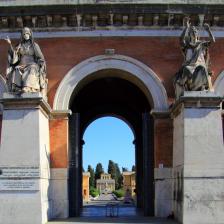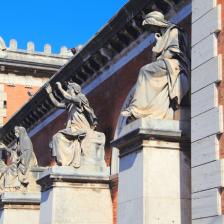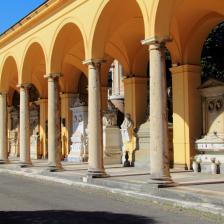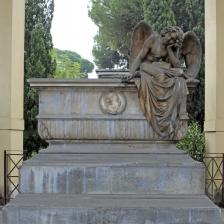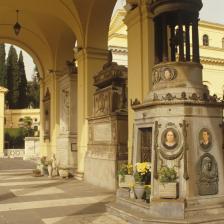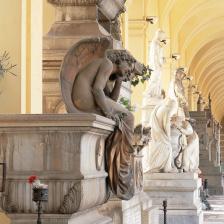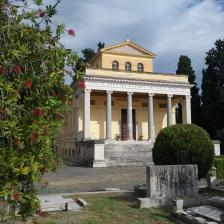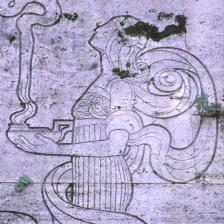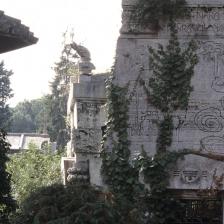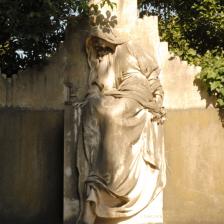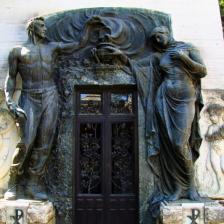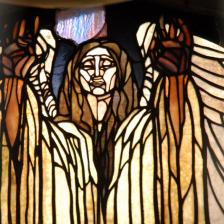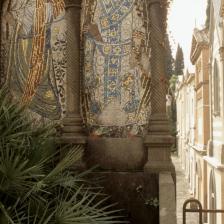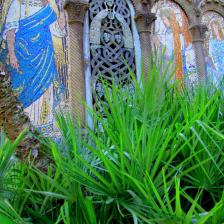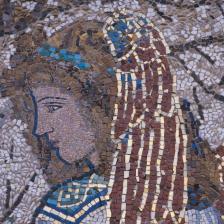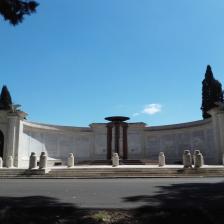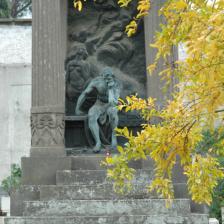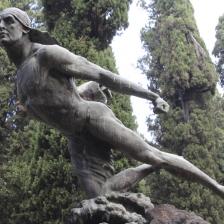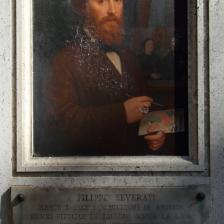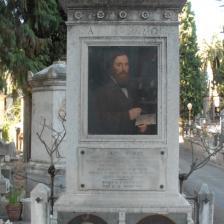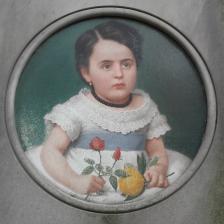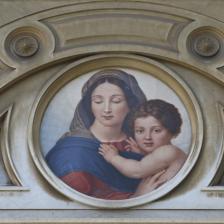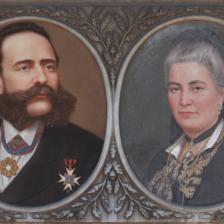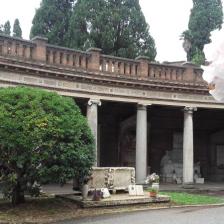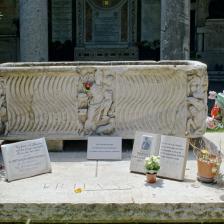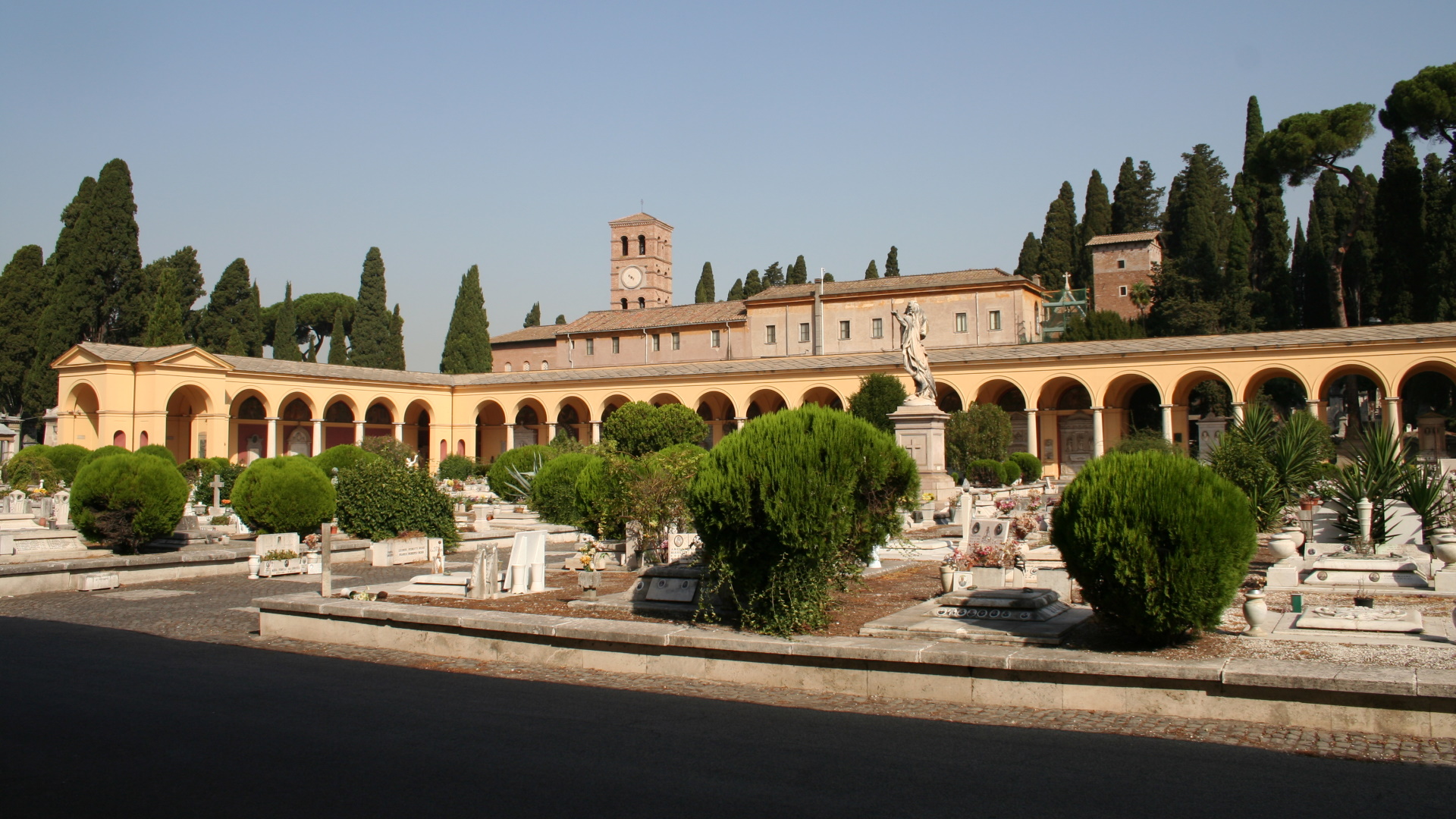
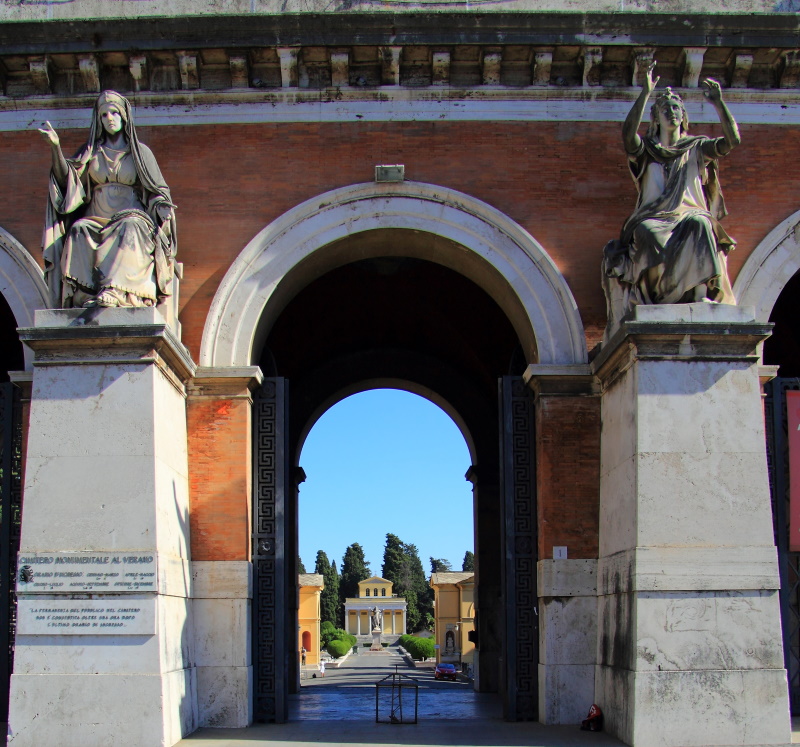
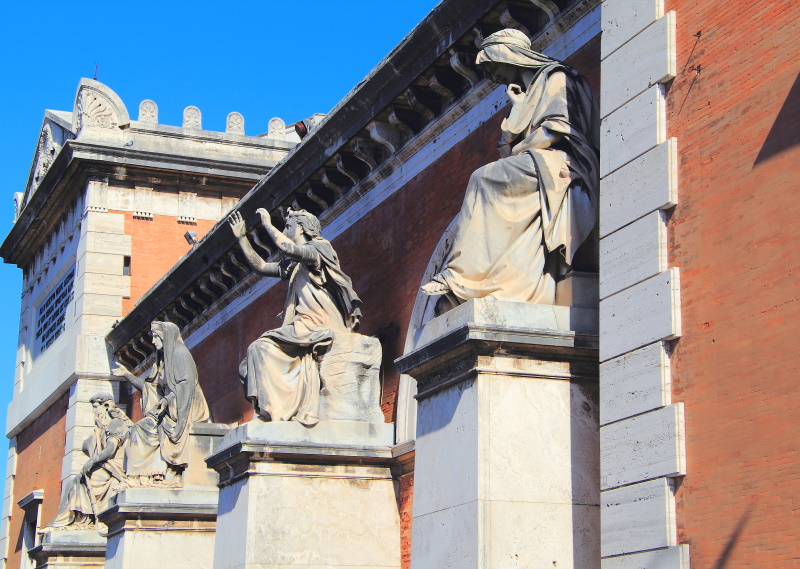
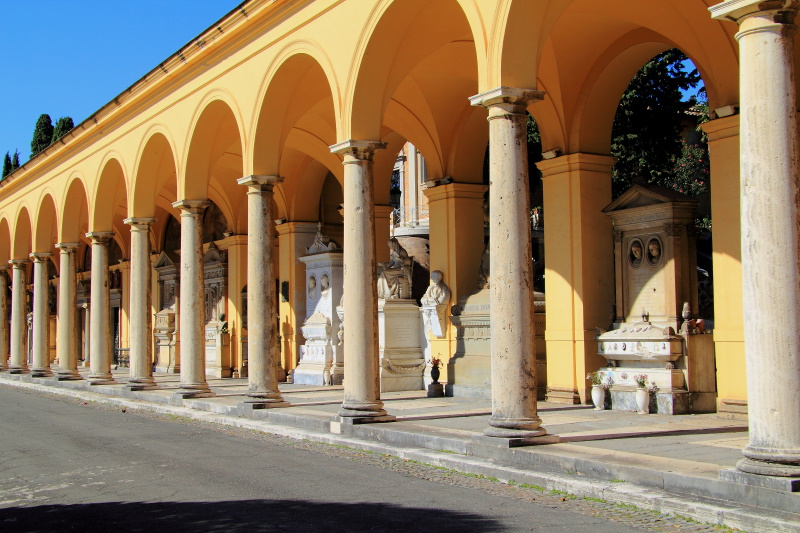
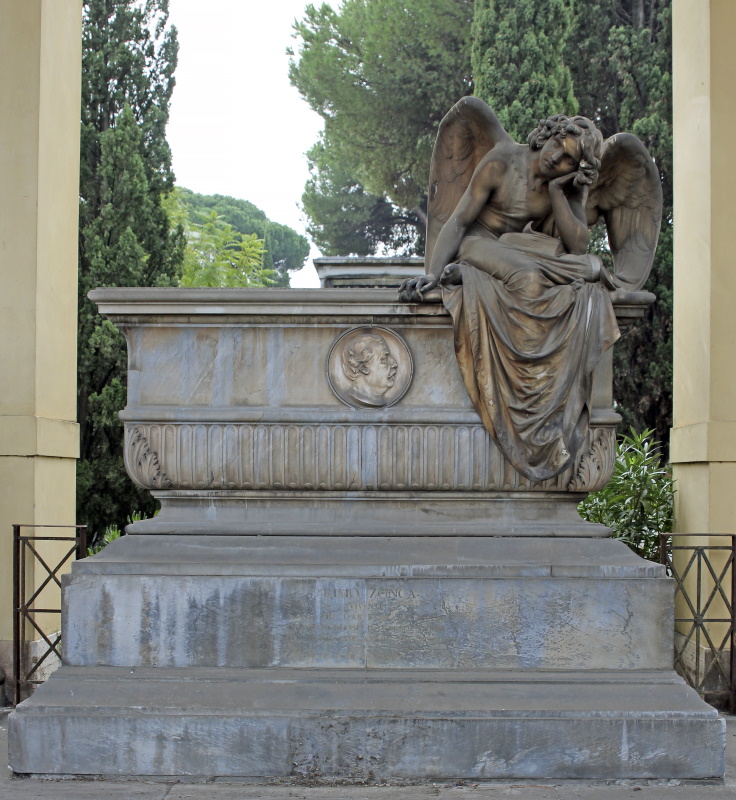
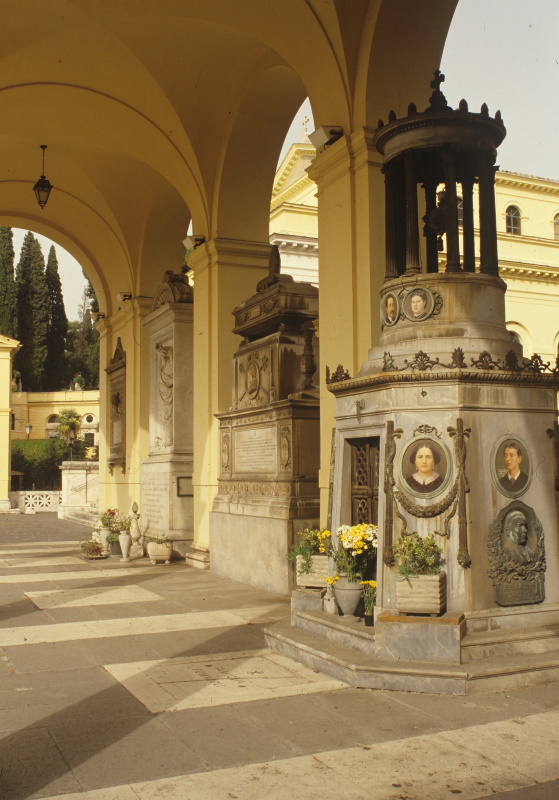
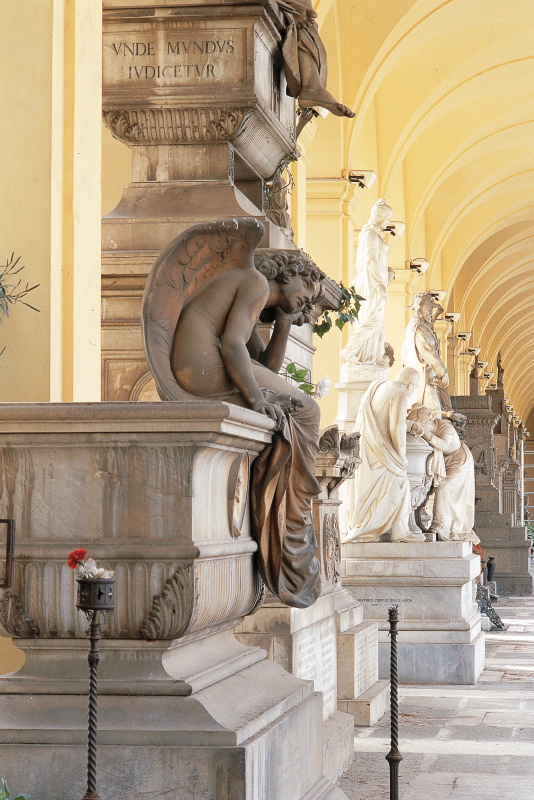
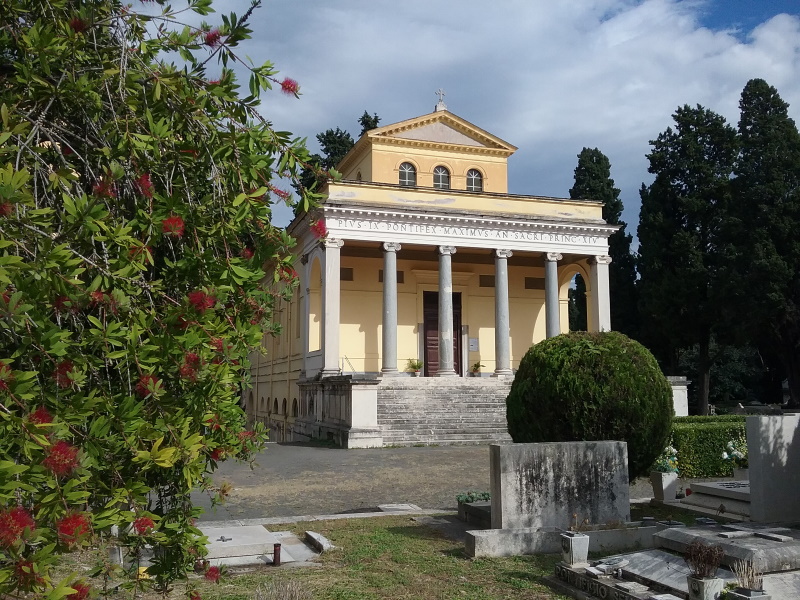
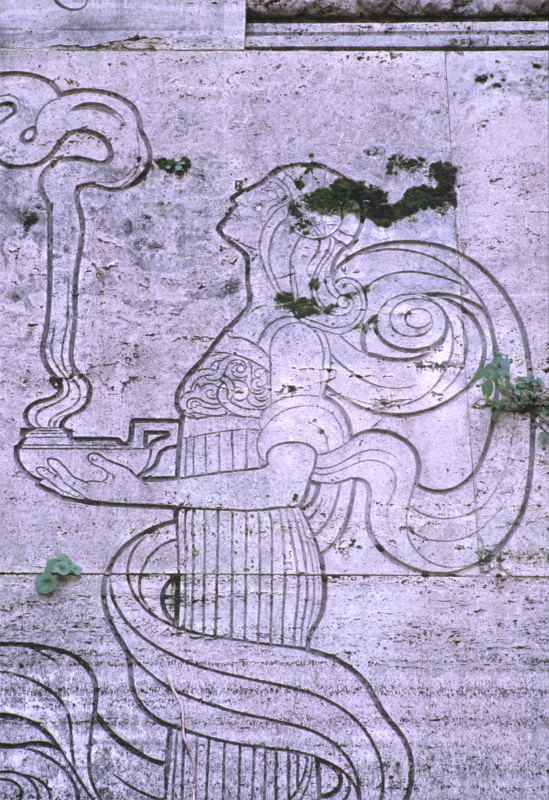
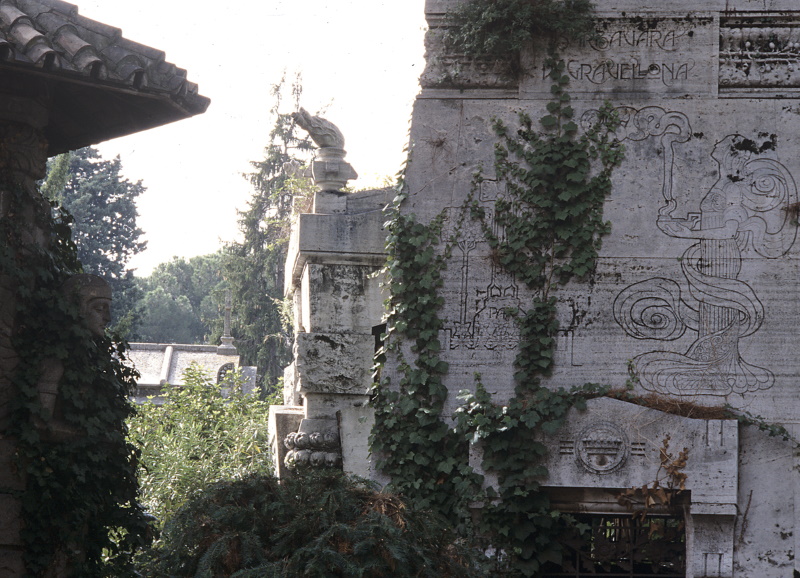
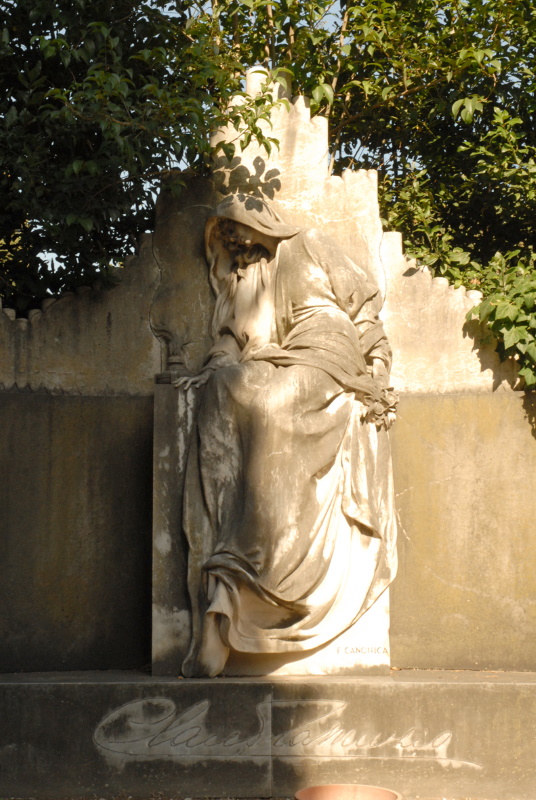
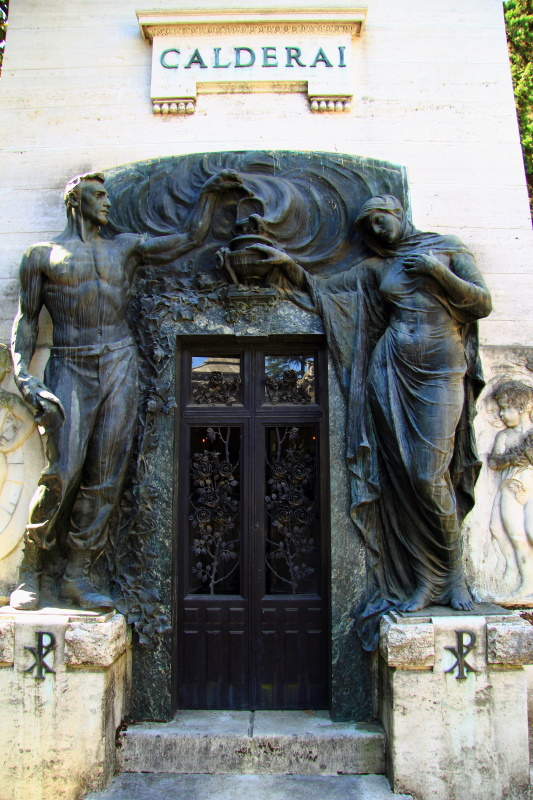
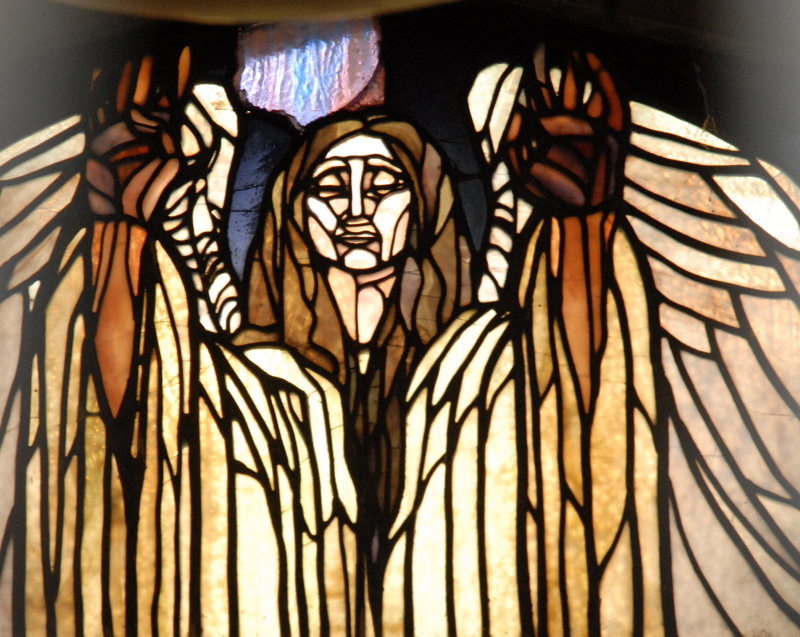
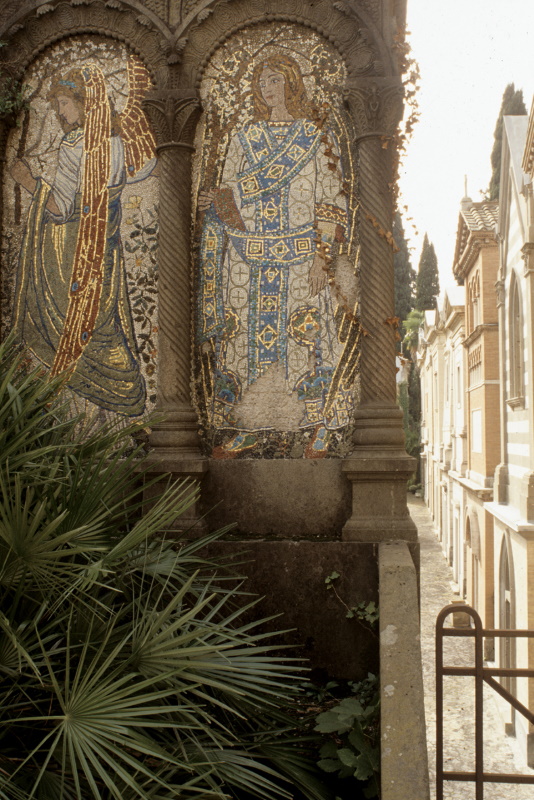
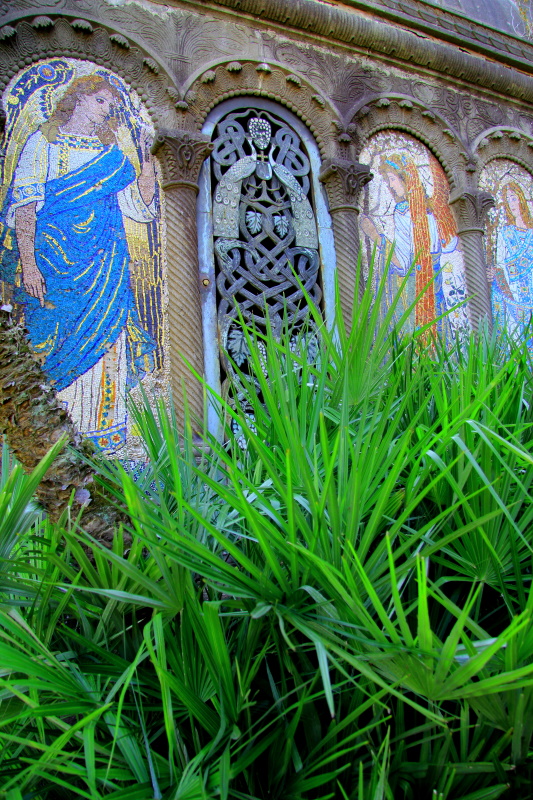
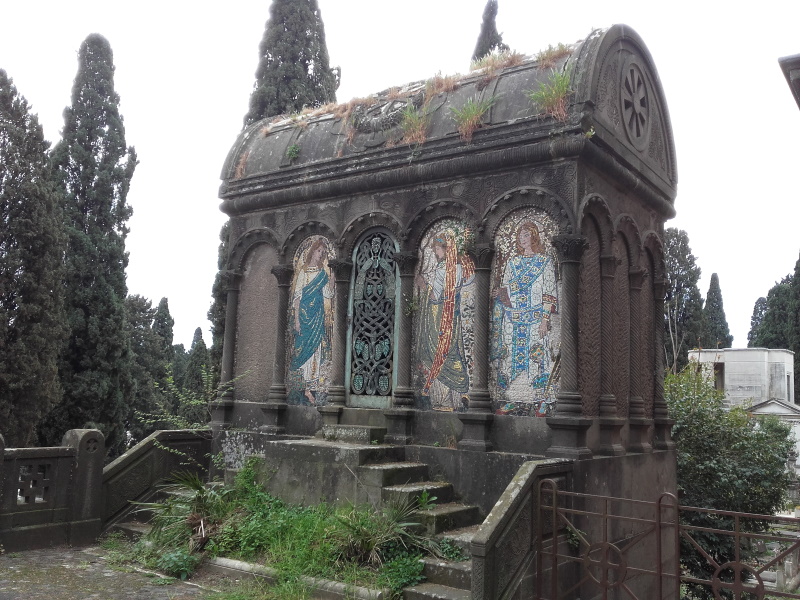
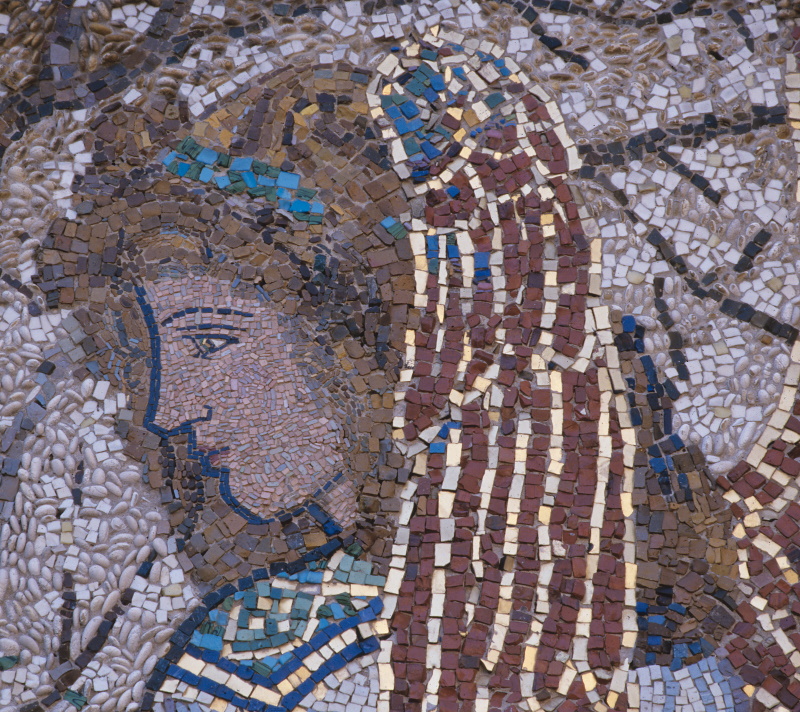
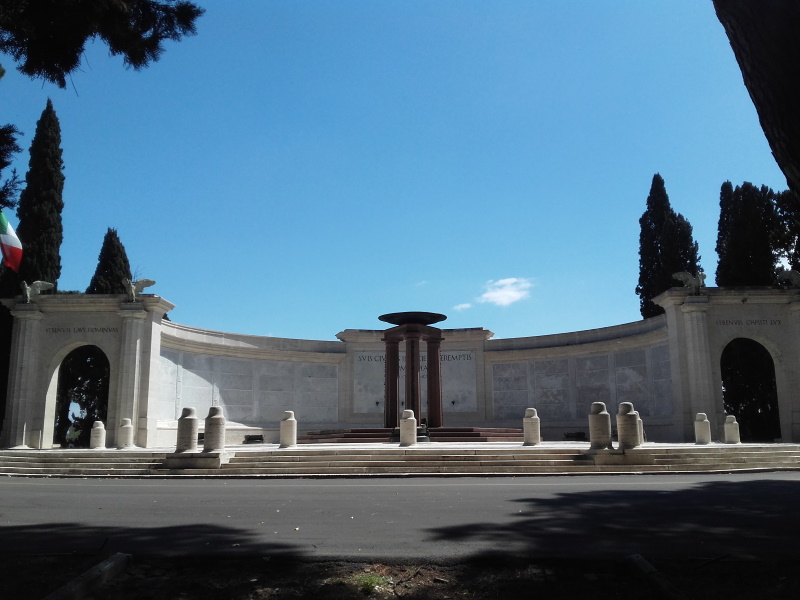

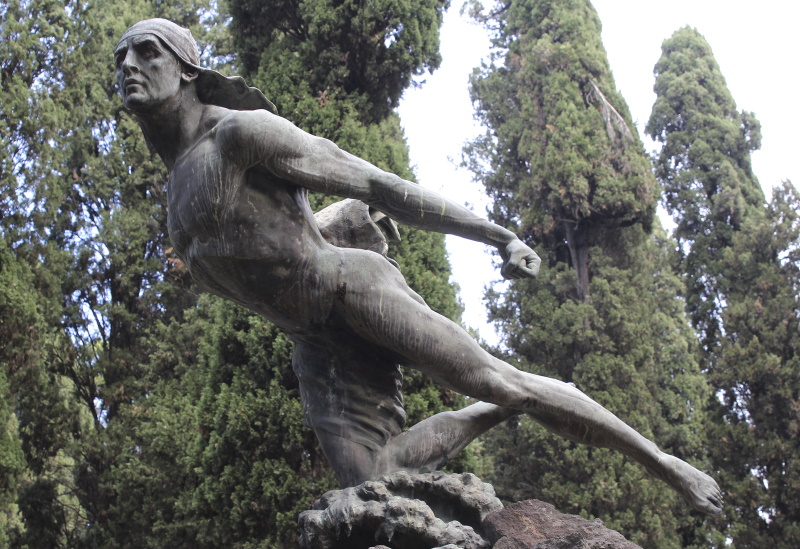
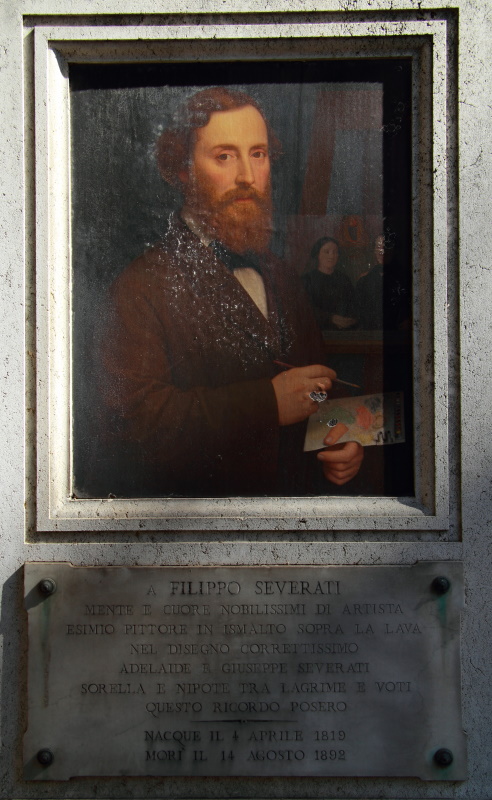
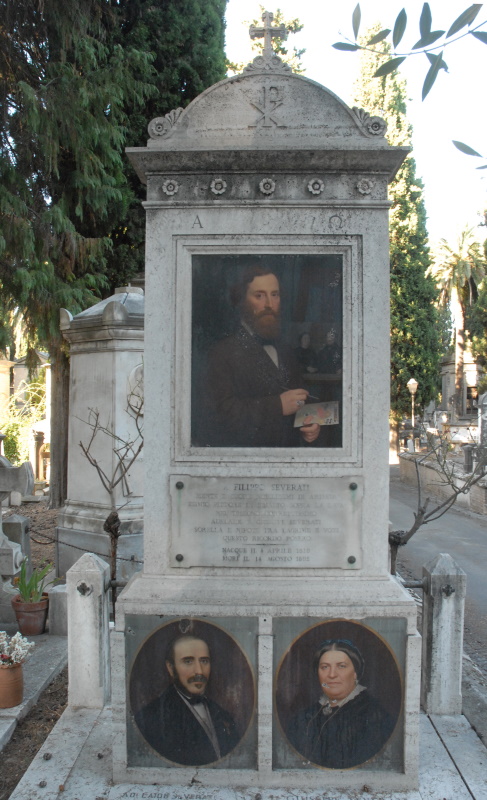
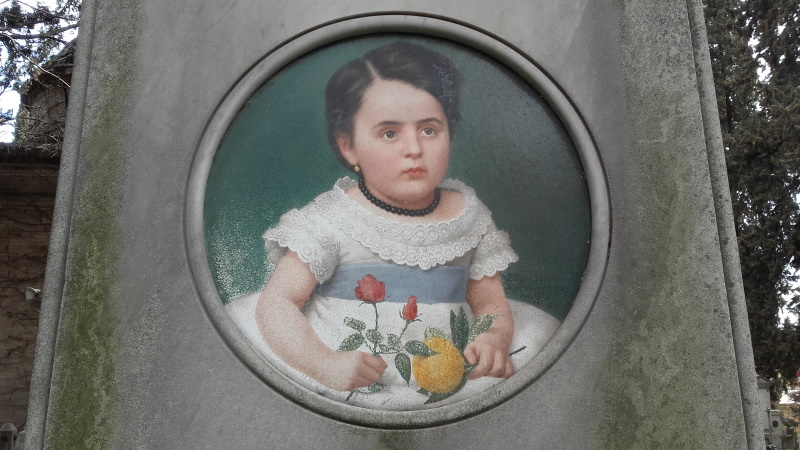
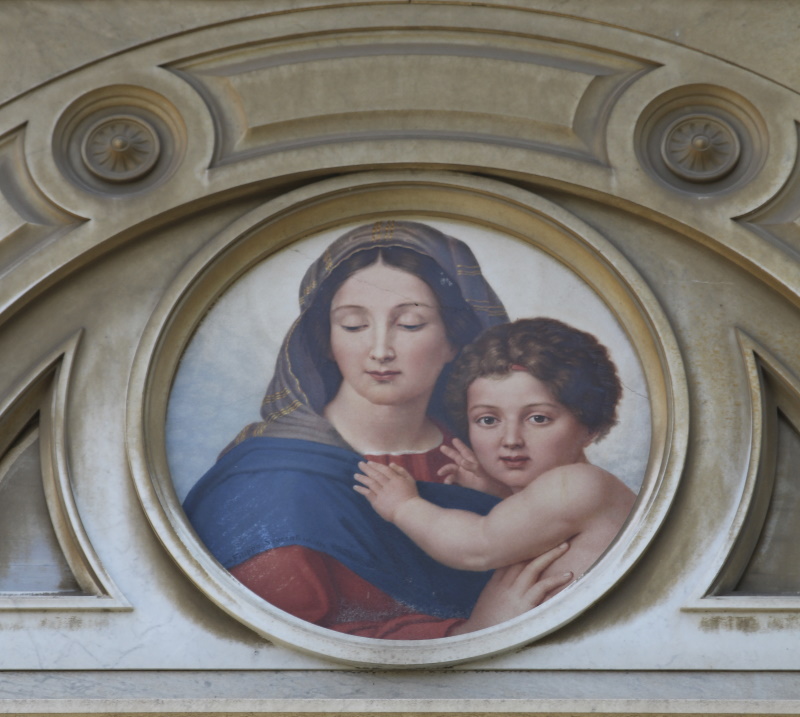
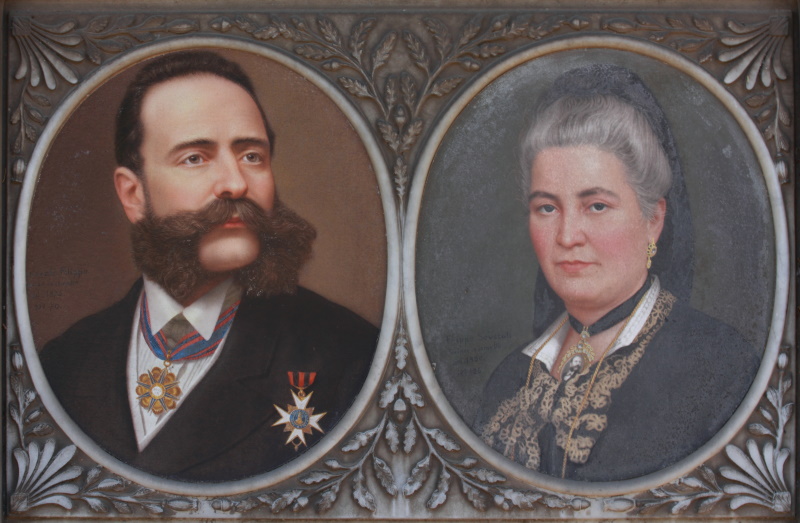
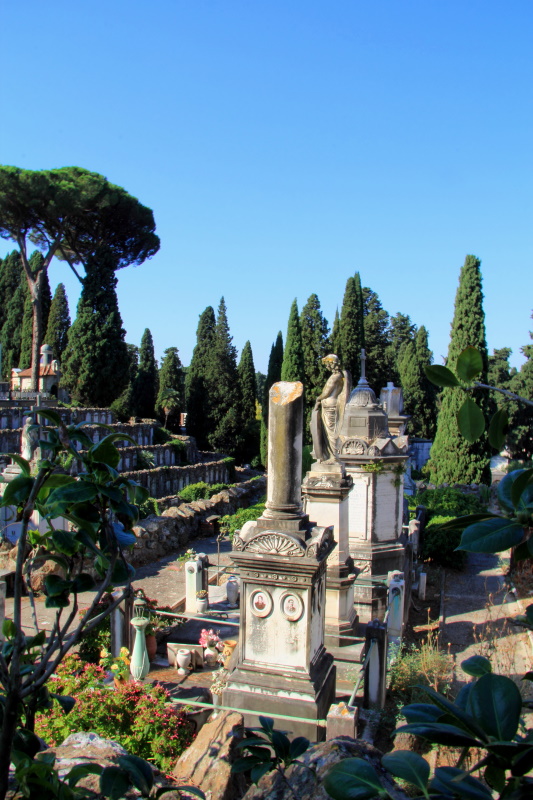
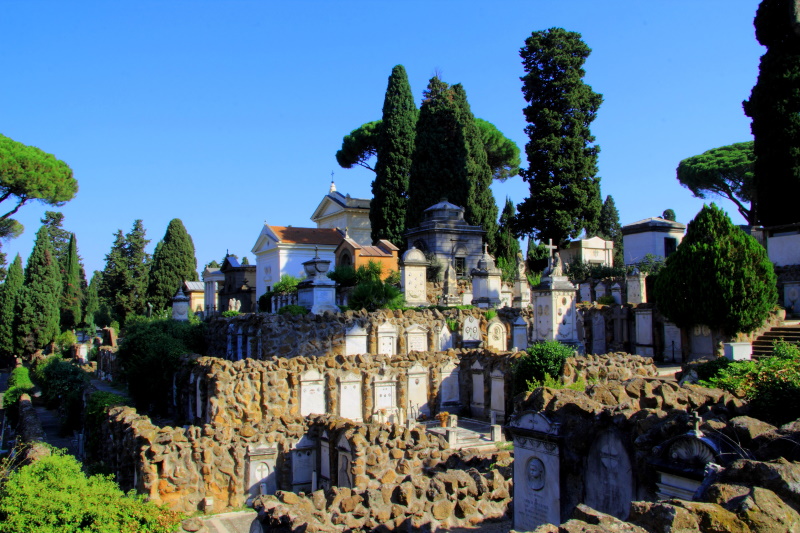
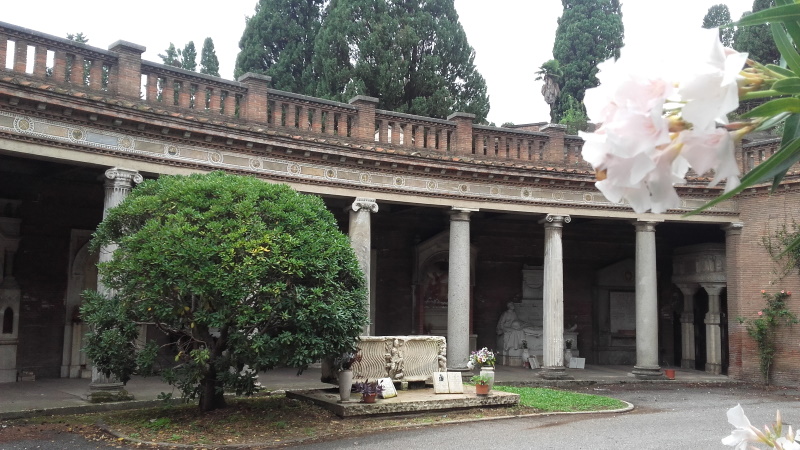
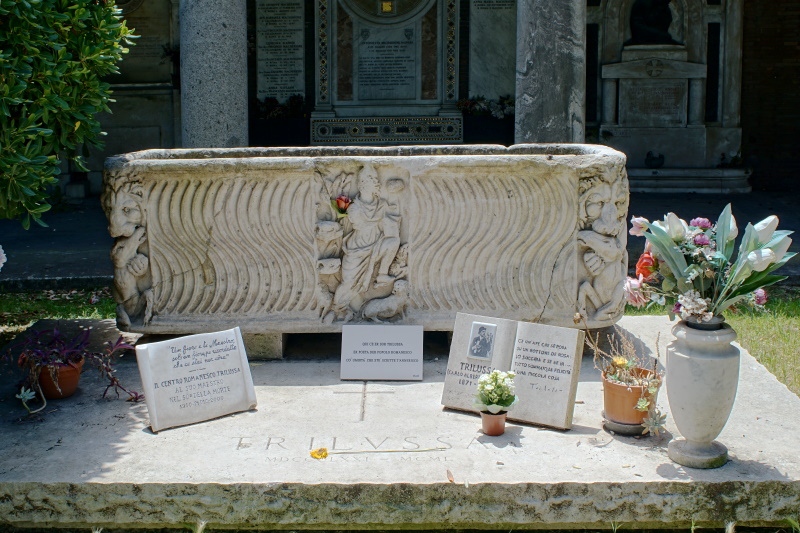
The Verano Monumental Cemetery covers an area of about 83 hectares. It has been a burial place for at least twenty centuries, as evidenced by the existence of a Roman necropolis: the catacombs of Santa Ciriaca. It owes the name Verano to the ancient Campo dei Verani, senatorial gens at the time of the Roman republic.
It was founded along the Tiburtina consular road during the Napoleonic reign of 1805-1814, in compliance with the 1804 Edict of Saint-Cloud, which imposed burials outside the city walls. The project was entrusted to Giuseppe Valadier between 1807 and 1812. The cemetery was consecrated in 1835, even if its construction proceeded with Pope Gregory XVI and Pope Pius IX and under the direction of the great pontifical architect Virginio Vespignani.
The works of the cemetery also continued after the advent of Roma Capitale (1870-1871), incorporating important plots such as Villa Mancini on which the Pincetto area stands.
The main entrance with three arches has two towers and an imposing entrance portico bearing four large female statues by different sculptors. They represent the four allegories of Silence by Giuseppe Blasetti, of Prayer by Francesco Fabi Altini, of Hope by Stefano Galletti, and of Meditation on death by Francesco Fabi Altini. The statues were completed in 1877.
Its monumental entrance precedes the large Quadriportico, the work of Vespignani, built in 1870 and completed in 1880, which is to be considered the heart of the Verano. In the center, the Statue of the Redeemer, sculpted by Leopoldo Ansiglioni in 1887. In the background, the small church of Santa Maria della Misericordia which represents the focal point in the architectural structure of the Quadriportico.
The current configuration is after the bombing of the San Lorenzo district on 19 July 1943, in which the Verano suffered damage located in three areas: the monumental entrance with the Quadriportico and the Pincetto, the management offices, and the area in front of the Military Memorial.
The Verano cemetery is a vast garden with hilly sections alternating with other flat ones, in which significant sepulchral monuments follow one another, in different forms, techniques, and styles: Neoclassicism, Realism, Eclecticism, Symbolism, Art Nouveau, Futurism. Works performed by the most representative exponents of the Roman and Italian artistic environment of the second half of the 19th and 20th centuries. To name but a few: Gaetano Koch, Pio and Marcello Piacentini, Giulio Monteverde, Ettore Ximenes, Ettore Ferrari, Gioacchino Ersoch, Pietro Canonica, and Cesare Picchiarini.
A specific feature of the Verano consists of the numerous series of 19th-century funerary portraits by Filippo Severati, also known as The Painter of Verano. Their originality resides in the materials and in their intrinsic quality: they are painted on lava and represent a meaningful gallery of the wealthy Roman bourgeoisie. Severati patented his original lava enamel painting technique in 1857, which remained secret until many decades after his death. Every single Severati enamel brings his signature, the date, and the progressive number, to form a cataloged gallery. Filippo Severati's paintings are one of the most important works of art in the monumental cemetery of Rome, and his technique has allowed his evocative portraits to be in good condition, despite being exposed to the elements for over a century.
Among the places of the Verano of intense suggestion, there is the terracing of the relief called Scogliera del Monte built between 1870 and 1876: various rows of high walls built with blocks of tuff, a local stone of the Roman area, support several marble steles of the deceased.
On the Rampa Caracciolo, a 1918 work by the architect Corrado Cianferoni, you can admire the tomb of the Roman dialect poet Trilussa was placed in the 1950s.
Since its construction, until 1980, almost all the inhabitants of the city have been buried here and you can find tombs of famous people such as Goffredo Mameli, Trilussa, Giuseppe Ungaretti, Grazia Deledda, Sibilla Aleramo, Giacomo Balla, Ettore Petrolini, Alberto Moravia, Gianni Rodari, Eduardo De Filippo, Vittorio Gassman, Nino Manfredi, Vittorio De Sica, and Alberto Sordi.
The Verano Monumental Cemetery, with its heritage of works of art and the burials of hundreds of illustrious personalities from the world of art, history, literature, music, cinema, theater, constitutes an open-air museum that has no equal in quantity and the particularity of the testimonies. It has an inestimable value from a historical-artistic and cultural point of view.
A place of rare memories, with its countless historical and artistic testimonies, the ancient cemetery exudes a charm equal to that of Montmartre in Paris or Highgate in London.
Information
From 1 October to 31 March open every day 7.30 to 18.00
From 1 April to 30 September open every day 7.30 to 19.00
Last entrance 1 hour before closing time
 Condividi
Condividi
Location
To find out about all accessibility services, visit the Rome accessible section.












































